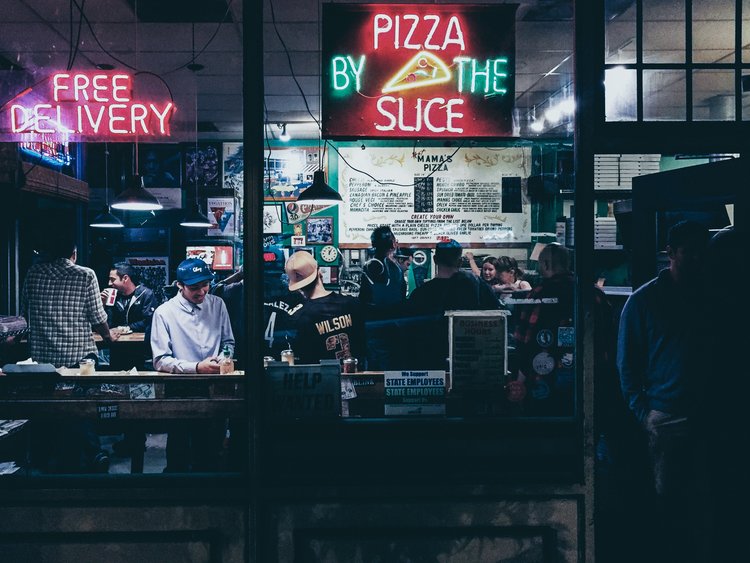The most dynamically growing market in history, Artificial Intelligence has been evolving at an astounding pace. We’ve seen AI co-curate the April issue of Esquire Singapore, write a car commercial for Lexus, coach a non-league football team and do even more bizarre things. However, many believe that there is an area, where AI will make the maximum returns: customer experience. Let’s see, how AI is transforming the way we procure goods and services.
Personalized Experiences
This one is probably a no-brainer, but customers care about personalization so much — 73% of them prefer brands that take time (and utilize technologies) to know them. HubSpot discovered "that personalized calls-to-action result in a 42% higher conversion rate than calls-to-action that are the same for everyone." While McKinsey and Company have found out that "personalization at scale has the potential to create $1.7 trillion to $3 trillion in new value."
So companies that truly want unique, personalized experiences for customers, opt for AI to use unstructured customer data and provide recommendations. Here we’re not talking just about those obvious things like recommended products on Amazon or content on YouTube, Spotify, and Hulu. There are companies with a strong personalization game.
For example, fashion brands which often cater to the needs of a younger crowd were among the first to embrace the power of AI. Levi’s recently launched Virtual Stylist, a chatbot that utilizes natural language processing to help customers find a perfect pair of jeans. Equipped with the training materials for human stylists, the bot finds out about customers’ lifestyle and preferences.
Another fashion company, UK-based Thread, gives its customers personalized recommendations on clothing using AI. Customers provide information about their personal style via quizzes and receive personalized weekly fashion advice.
Hospitality is another industry, which invests into making customers’ experience personal: Hilton Hotels went as far as employing a robot concierge named Connie, that greets guests in the lobby. The NLP-powered two-foot-tall robot not only helps guests find their way around the hotel but also recommends restaurants and places of interest after it learns more about guests.
Not only adults benefit from personalized content: Sesame Street launched the first AI-powered vocabulary learning app for kids. The app learns about a child’s vocabulary and reading skills to offer personalized learning exercises. It also follows the child’s progress and corrects its recommendations accordingly.
Self-service and automation
Calling a contact center is by far the last thing one would voluntarily want to do: waiting "on hold", being transferred to one agent after another and sometimes being forced to talk to grumpy customer service people. However, the situation is gradually changing with the help of AI, which is perfect for understanding customer choices, looking up information for both customers and agents, and automating routine tasks for agents.
In 2011, Gartner predicted that no human interaction will be needed in 85 % of customer relationships. Companies are turning to Conversational AI to achieve higher operational efficiency and give customers what they want. Placing bots on websites and landing pages, within apps and messengers usually results in great returns for businesses. Thus, the majority of popular pizza brands like Domino’s, Pizza Hut and Papa Johns have chatbots, which significantly simplified the process.
Ordering food through chatbots and digital assistants is the competitive edge that vendors will be trying to gain in the next few years: in the US, Google is already collaborating with DoorDash, Postmates, Delivery.com, Slice and ChowNow to enable ordering food via Google Assistant, Search and Maps.
Gartner’s recent report stated that "91% of organizations are planning to deploy AI within the next three years. By 2030, a billion service tickets will be raised automatically by customer-owned bots." Which sounds very believable in the light of recent partnerships between tech giants and large retailers: in August 2018, Amazon added Whole Foods voice shopping to Alexa and starting April 2019, Google Assistant can talk to Walmart, enabling customers to do their grocery shopping carts only using their voice.
However, chatbot use goes beyond grocery shopping and food delivery. Hipmunk, a platform for finding travel deals, created its "Hello chatbots" that simplify searching and can be easily integrated with Facebook, Slack, or Skype.
A railroad passenger service is something you’d least expect to use AI-powered technologies, but the US Amtrak proved everybody wrong: placing a customer service chatbot on its website that was able to answer over 5 million questions every year, the company saved $1 million in customer service expenses in a single year and increased revenue by 30% through automated bookings.
Ubiquity and 24/7 Availability
In the past two decades, as devices got more sophisticated and average internet speed got faster, consumers have become more demanding: they expect the highest level of service at any time of day, on any device or through any channel. This is where AI comes in: it can be built into virtually anything, never sleeps, is always "happy" and can even be taught empathy. For human agents, it’s hard to radiate joy and ooze empathy by the end of a working shift. So, with AI customers are guaranteed 24/7 support—and companies don’t have to employ and train any extra staff.
A great example is discount Canadian airline Westjet, which launched a digital travel assistant Juliet. The assistant, which is accessed through Facebook Messenger, provides day-of information for booked flights and instantly responds to questions about things like baggage guidelines, flight status, and traveling with pets.
Juliet can also assist booking flights, and can help users find inspiration for travel destinations by answering questions about their ideal trip.
An example of true ubiquity is Dom, the Domino’s bot, which can be accessed through so many different channels, it makes your head spin. Customers can order a pizza not only via the Company’s mobile app, but also through Slack, Facebook Messenger, SMS, Apple Watch, on Twitter, by tweeting the pizza emoji, Google Assistant & Alexa, and even Smart TVs.
Bottom line
According to IDC, worldwide spending on cognitive and AI systems will grow to $52.2 billion in 2021. Gartner predicts that by 2030, personal technologies will become the go-to for user experience delivery.
As the tech-savvy Generation Z will represent the largest customer base through then, every large company and even smaller ones will opt for cost-effective growth strategies and adopt cognitive technologies for ubiquitous AI-based self-service and automation.
We can expect a growing number of highly personalized services (many of which are sure to be voice-enabled) that take into consideration even the slightest details of consumer behavior. AI definitely belongs to customer experience, so for companies that are ready to jump on the trend, it will surely become a competitive differentiator.






